GIGABYTE BRIX Gaming BXi5G-760 mini-PC Review
by Ganesh T S on September 15, 2014 2:30 PM ESTPerformance Metrics - I
The BXi5G-760 was evaluated using our standard test suite for low power desktops / industrial PCs. We revamped our benchmark suite earlier this year after the publication of the Intel D54250WYK NUC review) We reran some of the new benchmarks on the older PCs also, but some of them couldn't be run on loaner samples. Therefore, the list of PCs in each graph might not be the same.
Futuremark PCMark 8
PCMark 8 provides various usage scenarios (home, creative and work) and offers ways to benchmark both baseline (CPU-only) as well as OpenCL accelerated (CPU + GPU) performance. We benchmarked select PCs for the OpenCL accelerated performance in all three usage scenarios. These scores are heavily influenced by the CPU in the system. The i5-4200H is not as powerful as, say, the i7-4770R in the BRIX Pro or the ZBOX EI750.


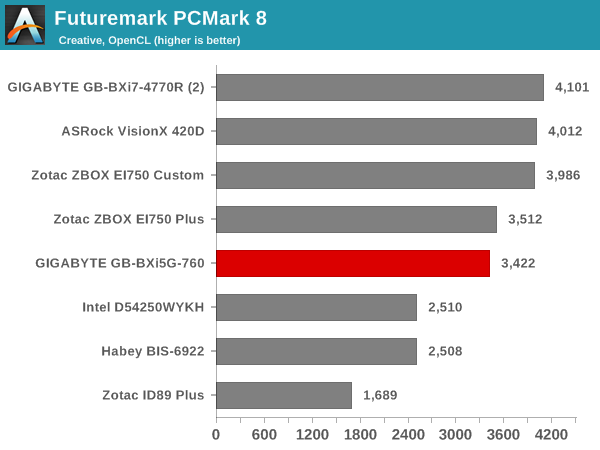
Miscellaneous Futuremark Benchmarks
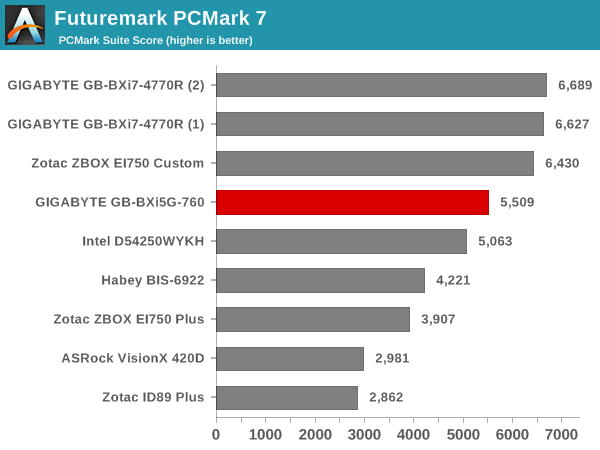
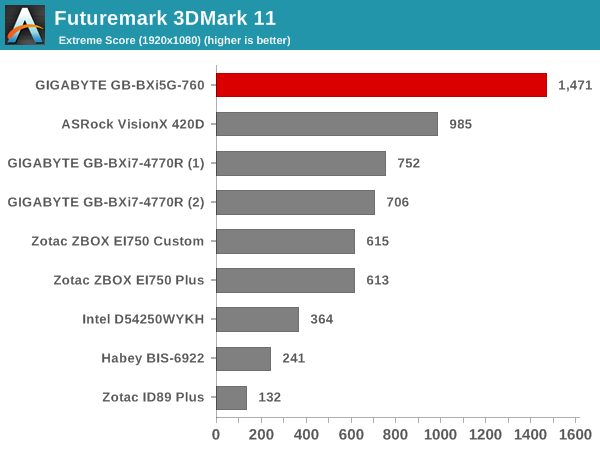
The 3D Mark 2013 results below may appear anomalous, but they are probably well served by the eDRAM in the Iris Pro parts. As we will see later, things get back into the expected mode when benchmarking actual games
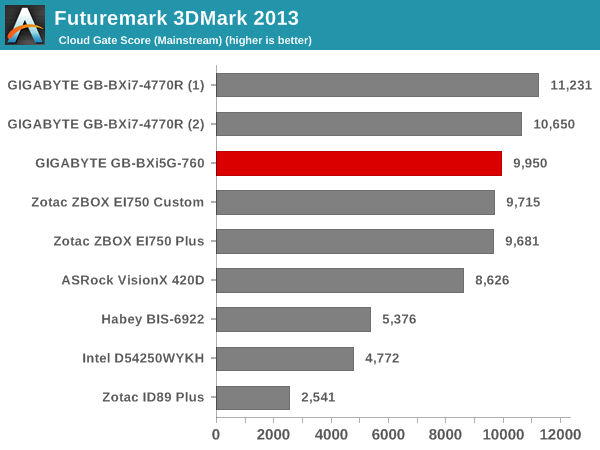
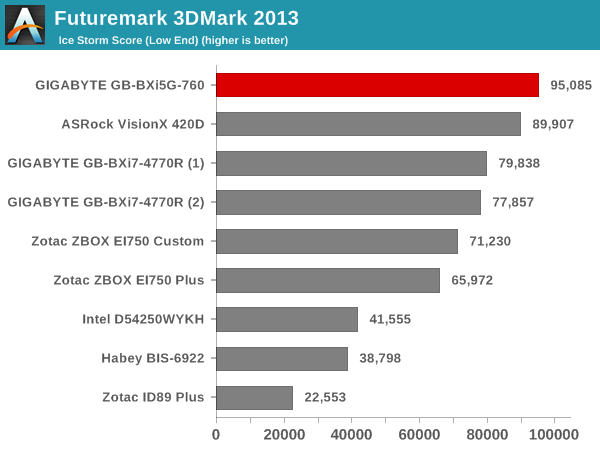
3D Rendering - CINEBENCH R15
We have moved on from R11.5 to R15 for 3D rendering evaluation. CINEBENCH R15 provides three benchmark modes - OpenGL, single threaded and multi-threaded. Evaluation of select PCs in all three modes provided us the following results.
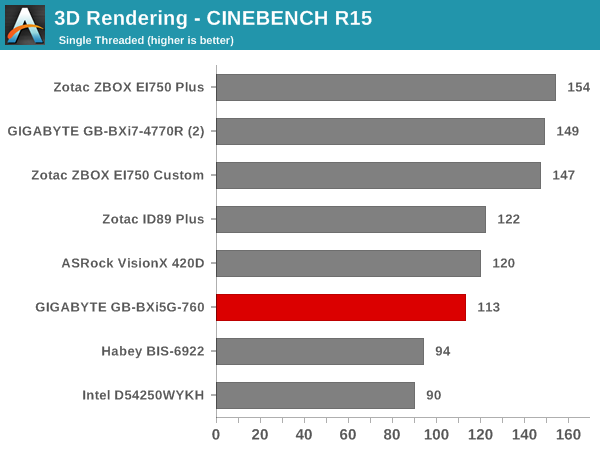

The surprising aspect here is that the single-threaded performance of the Core i5-4200H in the BXi5G-760 seems to lag the Core i5-4200M in the VisionX 420D.
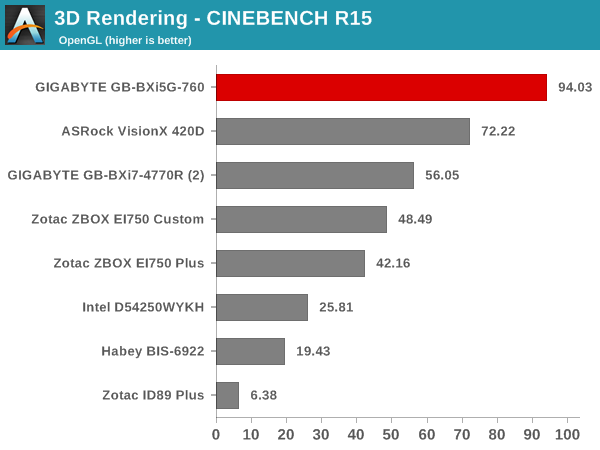
In the OpenGL mode, the GPU kicks in and comfortably puts the BXi5G-760 ahead of the pack










35 Comments
View All Comments
daddacool - Tuesday, September 16, 2014 - link
The sooner Gigabyte bites the bullet and does a gaming brix with watercooling the better. Until they do that, the thermal constraints make it a little pointless IMHOhojnikb - Tuesday, September 16, 2014 - link
where the hell would they put watercooling ?dj_aris - Tuesday, September 16, 2014 - link
Just invest $50 more on R&Ding better cooling on a $1000 pc, Gigabyte. Bigger fans? Bigger chassis? A tiny water cooling module? How awesome would that be.DiseasedPidgeon - Tuesday, September 16, 2014 - link
The reason they've made this small is for a living room unit. I prefer the solution provided by the G-Pack. http://piixl.comHaravikk - Monday, October 6, 2014 - link
Another waste of money from the Brix line; anything in this form factor that requires cooling is a dead end on thermal and acoustic performance. But the really weird thing is that it might not be so bad if they'd just build their own cooling system; put the CPU at the top facing down, and the GPU at the bottom facing up, sandwiching a nice big heat-sink with a built-in blower fan and you might just improve things, but two tiny fans shoved into a position they can't possibly cool properly from is not the answer.It's silly really, as machines only slightly bigger are far more compelling. The Alienware Alpha for example is still extremely small, but ought to have similar, or even better, performance for a lot less money.